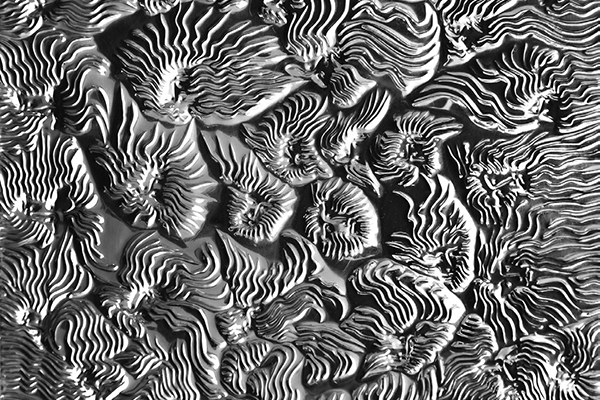La tecnica a sbalzo su lastra metallica
DOI:
https://doi.org/10.15168/xy.v4i7.123Abstract
La tecnica a sbalzo su lastra metallica, a differenza dell’incisione a stampa, viene usata per eseguire opere artistiche prevalentemente su rame, ottone, argento e oro così da ottenere un disegno ornamentale in rilievo. La toreutica, facente parte dello stesso ambito artistico, ha per oggetto opere di dimensioni e peso maggiori di una lastra, occupandosi prevalentemente della realizzazione di vasi, coppe, vassoi, armi, ecc. Pertanto, all’interno di questa stessa tecnica la scala d’intervento può variare dal gioiello al grande vaso, per arrivare fino a quella della grande statua composta da più lastre sbalzate. Tale arte esiste dalla preistoria, essendo praticata sin dall’età del rame dagli abitanti di Mehrgarh in Asia meridionale (attuale Pakistan) che già la utilizzavano tra il 7700 e il 3300 a.C.. Durante il terzo millennio a.C. in Medio Oriente erano già in uso diversi metodi per rendere più efficiente la produzione di una lastra a sbalzo, che veniva pressata e lavorata con strumenti in legno su matrici in bassorilievo realizzate su pietra, ossa o metallo. In epoca romana, invece, tale tecnica è citata da Plinio il Vecchio (I secolo d.C., nel XXXIII libro della sua Naturalis Historia) che include tra i cesellatori più celebri i greci Mentore, Acragante, Boeto e Mys. A differenza dell’incisone a punta secca, lo sbalzo della lastra si ottiene mediante l’uso di ceselli, asticelle d’acciaio sagomate in vario modo per ottenere le profilature e bombature desiderate applicando una pressione su lamine di rame, stagno, oro, argento dallo spessore molto contenuto. Tale pressione può essere esercitata sui due lati della lamina, così da ottenere gli effetti di concavità–convessità desiderati. I ceselli più minuti servono per ottenere una maggiore definizione delle linee, mentre quelli di maggior spessore sono utili per creare e accompagnare gli effetti della bombatura. Nel caso di sbalzi su lastre di spessori sottili, che possono essere anche 0,1 mm, al termine del lavoro generalmente la lamina viene rinforzata riempiendo i vuoti con cera, gesso, gomma o altro materiale, così da impedire la deformabilità del bassorilievo. L’analogo termine francese è repousséche, mentre quello inglese è emboss, che significano pulsare, spingere, goffrare, rimandando quindi all’idea di alterare la complanarità della superficie piana modellabile attraverso una spinta, in molti casi ottenuta mediante percussione con martello.


